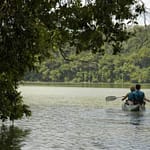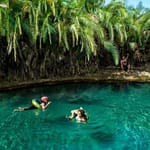The natural world has long been a source of inspiration for human innovation, especially in the realm of hunting and resource acquisition. From the streamlined movements of stingrays gliding through the ocean to the sophisticated machinery used in deep-sea drilling, understanding the interplay between biological adaptations and technological advancements reveals a fascinating continuum. Recognizing these connections not only deepens our appreciation of ecological systems but also guides sustainable development and technological progress.
Table of Contents
- Introduction: The Intersection of Nature and Technology in Hunting
- Fundamental Principles of Hunting: From Biological Strategies to Physical Laws
- Evolution of Hunting Techniques: Nature’s Innovations over Time
- Human Technological Evolution in Hunting: From Primitive Tools to Modern Devices
- Modern Examples of Nature and Technology in Hunting: The Case of Royal Fishing
- Non-Obvious Connections: Economics, Extinction, and Technological Innovation
- Future Directions: Enhancing Hunting Strategies through Interdisciplinary Insights
- Conclusion: Bridging the Natural and Technological in the Hunt for Knowledge and Survival
Introduction: The Intersection of Nature and Technology in Hunting
Hunting, in its broadest sense, encompasses both the biological strategies employed by animals to survive and the innovative methods humans develop to secure resources. In nature, hunting is driven by evolutionary pressures that favor adaptations such as speed, camouflage, or specialized anatomy. Human ingenuity, on the other hand, has harnessed scientific principles—like physics and engineering—to create tools and techniques that extend our natural capabilities.
Understanding how these two realms intersect is crucial for ecological conservation and technological innovation. By studying biological hunting methods, engineers can design more efficient, sustainable tools. Conversely, technological advances can help mitigate overhunting and environmental degradation, ensuring a balanced coexistence. This article explores the continuum from biological adaptations to technological inventions, illustrating how they inform and enhance each other.
Biological adaptations and technological progress are interconnected fields of study that illuminate the principles of efficient resource acquisition.
Fundamental Principles of Hunting: From Biological Strategies to Physical Laws
How animals like stingrays utilize specialized anatomy and behavior for hunting
Stingrays exemplify evolutionary innovation in underwater hunting. Their flattened bodies and wing-like pectoral fins allow them to glide smoothly across the seabed, minimizing energy expenditure while stealthily approaching prey. Their electroreceptive organs, called ampullae of Lorenzini, detect electric signals from hidden prey such as crustaceans and small fish. These biological tools enable stingrays to hunt efficiently in murky waters where visibility is limited, demonstrating how anatomical specialization directly enhances hunting success.
The physics behind projectile motion underwater and its relevance to both animals and human technology
In aquatic environments, projectile motion is governed by principles of fluid dynamics and gravity. For example, predatory fish like tuna and tarpon use precise muscle control to project bursts of speed, launching themselves at prey with optimized angles to maximize impact. Similarly, humans have developed underwater projectile devices such as harpoons and torpedoes that rely on physics equations—like those governing trajectory and drag—to improve accuracy and range. Understanding these physical laws allows both animals and engineers to refine their hunting tools for greater efficiency.
The evolutionary advantages of hunting adaptations in nature
Adaptations such as the streamlined bodies of sharks or the sonar capabilities of dolphins confer significant survival benefits. These features reduce energy costs during pursuit, increase success rates, and provide competitive advantages in resource-scarce environments. Evolutionary pressures favor such traits because they directly impact reproductive success, illustrating how physical laws shape biological evolution and, by extension, influence the development of human technology inspired by these adaptations.
Evolution of Hunting Techniques: Nature’s Innovations over Time
Case studies of specific species (e.g., stingrays, predatory fish)
Beyond stingrays, predatory fish such as anglerfish and pike demonstrate diverse hunting strategies. Anglerfish use bioluminescent lures to attract prey in dark depths, effectively mimicking prey signals—a form of biological deception. Pike, with their elongated bodies and sharp teeth, rely on sudden ambushes and rapid strikes. Each strategy reflects adaptations that have evolved over millions of years, emphasizing the importance of environmental pressures in shaping hunting techniques.
The extinction of species like the golden toad and what it reveals about environmental pressures and hunting dynamics
The golden toad’s extinction in the late 20th century highlights how environmental changes, including habitat loss and altered predation pressures, can lead to rapid species decline. While not a predator itself, its disappearance underscores the delicate balance within ecosystems where hunting—natural or human-induced—can have cascading effects. Overhunting of predators or prey can destabilize ecological networks, leading to extinctions that reflect the interconnectedness of biological and environmental factors.
How species develop unique tools and methods for survival and hunting efficiency
Evolution fosters innovation; for example, the mantis shrimp wields a club-like appendage capable of delivering cavitation bubbles and shockwaves, stunning prey. Such specialized tools are the result of natural selection favoring traits that increase hunting success. These biological innovations often inspire human engineers to develop new tools and technologies, exemplifying the synergy between natural evolution and technological progress.
Human Technological Evolution in Hunting: From Primitive Tools to Modern Devices
Historical overview of hunting technology (spears, nets, firearms)
Early humans relied on simple tools like spears and nets, crafted from stone and plant fibers, to hunt animals. The development of firearms marked a significant leap, introducing precision and range. These inventions were driven by an understanding—either intuitive or scientific—of projectile motion and energy transfer. Each technological step aimed to improve efficiency, safety, and success rates, reflecting an ongoing quest to mimic or surpass natural hunting skills.
The role of physics and engineering in developing effective hunting tools
Physics principles such as leverage, trajectory, and fluid dynamics underpin the design of modern hunting equipment. For example, the engineering of high-powered bows and crossbows involves optimizing draw weight and arrow velocity. In underwater environments, torpedoes and autonomous drones apply fluid mechanics to navigate and target with high precision. Engineers study animal movements and physical laws to create tools that enhance human hunting capabilities, often inspired by natural models.
Case example: Deep-sea drilling technology as an extension of natural hunting strategies in extreme environments
Deep-sea drilling exemplifies how human technology extends natural hunting principles into extreme environments. Like predators seeking elusive prey, engineers design drills and robots capable of penetrating the earth’s crust to locate resources. This process involves understanding pressure, fluid flow, and material science—principles akin to biological adaptations that enable animals to hunt or survive in harsh habitats. The analogy highlights how natural strategies inspire technological solutions in frontier sciences.
Modern Examples of Nature and Technology in Hunting: The Case of Royal Fishing
Royal Fishing as a conservation and technological endeavor
Royal Fishing, historically associated with aristocratic leisure, now often encompasses conservation efforts and advanced technology. Modern techniques include acoustic fish finders, GPS tracking, and sustainable harvesting practices. These methods mirror natural predatory behaviors, such as dolphins herding fish or predatory birds using sight and flight patterns, demonstrating how technology can emulate and adapt biological strategies to achieve sustainable resource management.
How modern fishing techniques mimic natural predatory behaviors and physics principles
Electromagnetic and acoustic signals used in modern fishing equipment imitate the sensory cues animals rely on in hunting. For instance, fish finders emit sound waves that reflect off schools of fish, similar to echolocation in dolphins. Fluid dynamics principles govern the design of nets and lures to maximize efficiency and minimize environmental impact. These innovations are grounded in understanding the physics of underwater projectile motion and fluid flow, illustrating the deep connection between biological hunting and technological development.
The influence of underwater projectile motion and fluid dynamics on fishing technology
Lures and bait are designed considering how water currents and projectile trajectories influence movement and attraction. For example, the way a lure moves through water mimics prey behavior, relying on principles of fluid mechanics to appear natural. Similarly, modern fishing lines and nets are engineered to optimize flow and reduce drag, increasing catch efficiency while reducing ecological disturbance.
Non-Obvious Connections: Economics, Extinction, and Technological Innovation
The cost differential in Victorian monocles and resource allocation in hunting
The high cost of Victorian monocles, often considered luxury items, can be analogized to resource allocation in hunting economies. Just as premium monocles required significant material and craftsmanship investment, effective hunting—whether biological or technological—demands allocation of energy, time, and resources. This comparison underscores how economic principles influence both luxury and survival strategies.
The extinction of the golden toad as a consequence of ecological imbalances influenced by hunting pressures
The golden toad’s disappearance highlights how overhunting or environmental changes disturb ecological balances, leading to extinction. Excessive predation or habitat destruction can remove key species, causing ripple effects that threaten biodiversity. This example emphasizes the necessity of sustainable hunting and resource management, integrating ecological science into technological solutions.
How understanding these connections informs sustainable hunting and resource management
By studying ecological and economic impacts, policymakers and scientists can develop strategies that balance resource extraction with conservation. Technologies inspired by biological systems—such as biomimetic sensors or sustainable fishing gear—aim to reduce environmental footprint while maintaining resource availability. This interdisciplinary approach is vital for ensuring the longevity of ecosystems and human industries alike.
Future Directions: Enhancing Hunting Strategies through Interdisciplinary Insights
Potential technological innovations inspired by animal hunting behaviors
Emerging technologies such as autonomous underwater vehicles mimic predatory fish, employing AI and fluid dynamics to locate and track targets efficiently. Similarly, robotic systems inspired by insect flight or bird navigation could revolutionize hunting and resource management. Cross-disciplinary research combining biology, physics, and engineering promises to develop tools that are both effective and environmentally friendly.
The importance of ecological awareness in developing responsible hunting technologies
Integrating ecological data into technological design ensures that innovations support sustainability. For example, sensors that monitor fish populations can inform adaptive harvesting strategies, preventing overexploitation. Recognizing natural limits and behaviors allows us to create technologies that work harmoniously with ecosystems, rather than disrupting them.
The role of physics and environmental science in designing sustainable practices
Advances in fluid mechanics, materials science, and environmental modeling enable the development of eco-friendly fishing gear and hunting equipment. These innovations reduce bycatch, minimize habitat disturbance, and improve resource efficiency. As our understanding of physical laws deepens, so does our capacity to craft sustainable solutions rooted in nature’s own principles.
Conclusion: Bridging the Natural and Technological in the Hunt for Knowledge and Survival
The journey from biological adaptations to human inventions illustrates a continuous thread of innovation driven by the fundamental desire to survive and thrive. Recognizing that both animals and humans operate within the same physical laws fosters a deeper appreciation of natural strategies and guides us in developing responsible technologies.
Interdisciplinary understanding—combining biology, physics, ecology, and engineering—is essential for future advancements. Technologies inspired by nature can enhance efficiency and sustainability, but must be implemented with ecological awareness. As we move forward, maintaining a balance between leveraging technological progress and preserving ecological integrity remains paramount.
For those interested in contemporary applications of these principles, exploring modern fishing techniques and conservation efforts provides valuable insights. For example, Royal Fishing review & tips exemplifies how traditional practices are evolving with technology, embodying the timeless interplay between natural strategies and human innovation.














